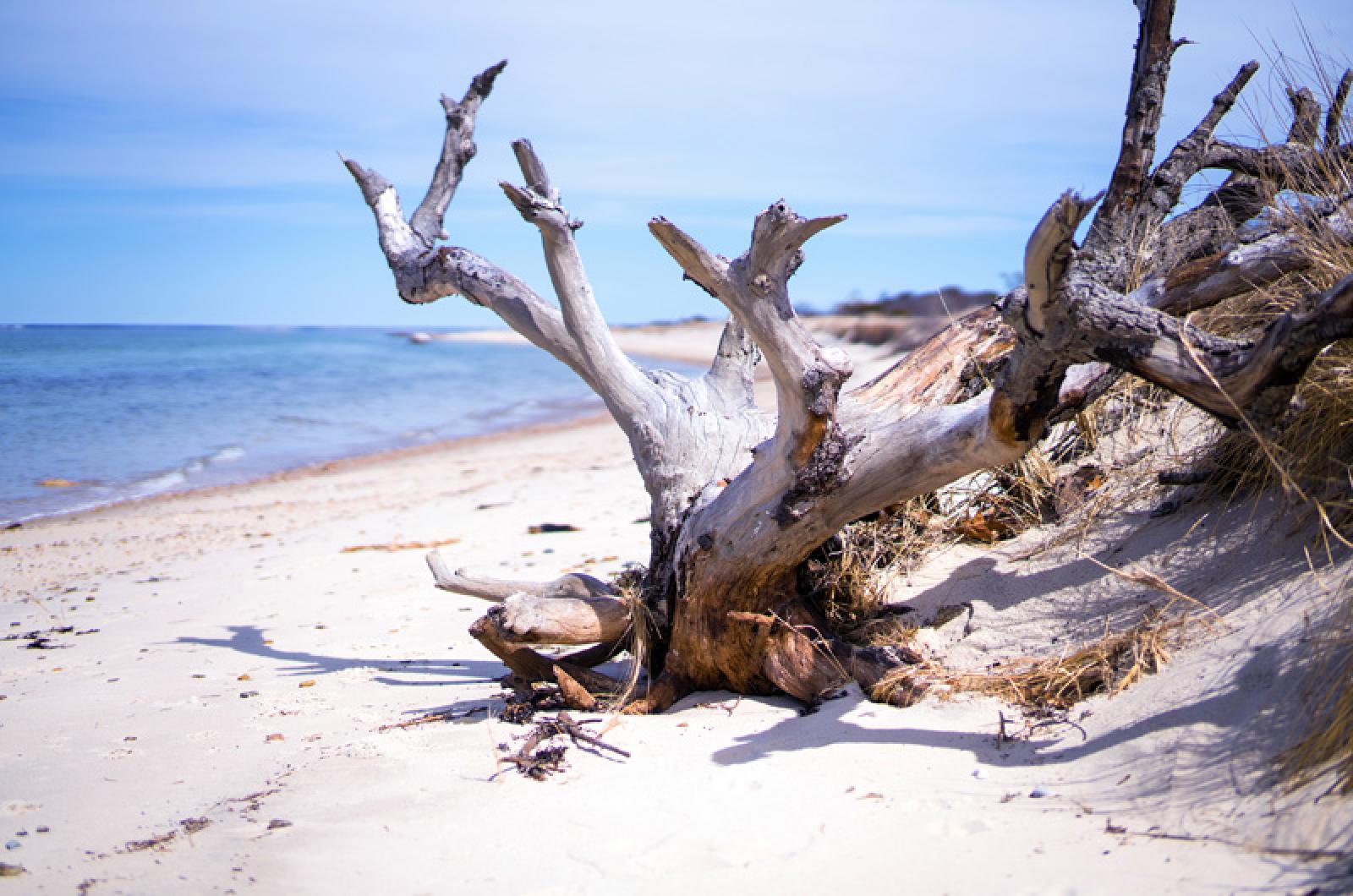Have we been fleeced? That is the question West Tisbury resident and concerned citizen Ginny Jones has been asking. She recently related a puzzling plastic predicament.
While it is hard not to notice the plentiful plastic pollution, from nip and water bottles here to the great oceanic garbage patch out to sea, you may not know about the even bigger problem of microfibers. I didn’t, but now I do and have another hydrocarbon horror about which to worry.
Microfibers are the super-thin stands of synthetic fibers, including acrylic, polyester and polypropylene that are used in our modern clothing. Sweaters, leggings, fleece and many athletic and outdoor clothing are made from microfibers, and sometimes these fibers are the second life for recycled bottles and other plastics.
Synthetic clothes have created a quite a quagmire, as they shed their fibers. It is estimated that one fleece jacket can drop 250,000 fibers per wash. New York city could have almost seven billion microfibers flowing into its harbor every day just from washing our wears.
At less than one denier (a fiber measurement), these threads are thin. To get a sense of the size of these slender slivers, consider that microfiber can be less than 1/5 the diameter of a human hair and some may be as small as half the size of a human red blood cell.
The problem occurs in the course of washing your clothes. Microfibers are shed in the wash and although our clothes dryers have filters, our washing machines do not have ones that will catch these floating fibers. Instead they flow out with the washing machine’s wastewater and can end up in our fresh and salt waters and eventually move their way through the food chain until we are literally eating fleece.
A European study noted that people could ingest 11,000 pieces of plastic per year by eating shellfish. It is possible that an appetizer of six oysters may provide 50 fibers and just one mussel might have 178 fibers. Don’t think you are safe if you forgo shellfish, since many of our meats are fed fishmeal. In another
California study, it was determined that one in three shellfish, one in four fish and 67 per cent of market fish species have microfiber in them.
The problem of microfibers is more significant that you might think. One scientist called these fibers the “single biggest problem facing oceans.” Of all of the plastics in the ocean, up to 89 per cent result from microfibers and on our beaches, microfibers account for 85 per cent of human-made debris. Not surprising when you realize that in the U.S., 60 or more per cent of our clothes are derived from synthetic fibers.
Ginny called Patagonia, Maytag and the Association of Home Appliance Manufactures to find out what they are doing about the problem. Leave it to the human ingenuity that created these clothes to solve this human-made problem. Washing machine filters are one easy solution. Unfortunately, most modern machines are not currently using that simple technology to strain the fibers before they get washed away with the wastewater nor are there plans to install them.
Patagonia, Columbia Sports, and 18 other companies have a working group dedicated to this problem and have supported projects and inventors with grants. Two products will be market-ready soon.
Guppy Friend is a German company’s invention that is simple and effective. It is a filter bag that you put your clothes into to be washed. Shed fibers can’t escape the bag, which is cleaned of them after each washing. Another is the Cora Ball, named for coral that snags all manners of items. The Cora Ball is the subject of a very successful Kickstarter campaign and will be ready sometime this year. It hooks or catches microfibers that you remove and, then, dispose of them properly.
Better quality and newer clothes shed less and can also help solve the problem, as do front-loading washing machines that cause 5 times less shedding than top loaders. So don’t be afraid of pulling the wool (or cotton) over your eyes or otherwise, or be prepared to get more unwanted fiber in your diet!
Suzan Bellincampi is director of the Felix Neck Wildlife Sanctuary in Edgartown, and author of Martha’s Vineyard: A Field Guide to Island Nature.




Comments
Comment policy »